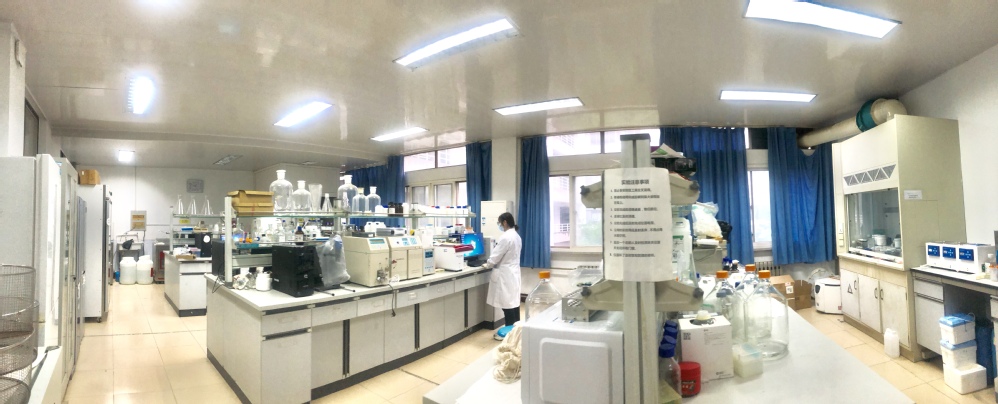I. Profile
Relying on the first-class disciplines of clinical medicine in Shandong Province and the Institute of Medical Molecular Genetics, Tumor Molecular Biology Laboratory (hereinafter referred to as the "Laboratory") was approved as the Key Laboratory of Tumor Molecular Biology in Shandong Province in 2011 and 2016 respectively during the “Twelfth Five-Year Plan” and “Thirteenth Five-Year Plan” periods. The Laboratory focuses on the research and development of tumor molecular diagnostic and therapeutic reagents, the molecular target screening and mechanism research of natural active substances against tumor/anti-inflammatory, the molecular target screening of deafness and drug intervention, etc. It has won the National Natural Foundation, provincial and ministerial key support projects, and achieved a number of landmark research results with important academic significance and application value in the applied basic research, technology development, and achievement transformation of diseases.

II. The Team
At present, with well-balanced age, educational background and academic titles, the laboratory has 25 full-time staff, including 4 professors, 15 associate professors, and 23 doctors. The number of personnel with doctoral degrees accounts for 92% of the total. In recent years, the team has mainly carried out work in the following directions: (1)Research and development of tumor molecular diagnostic and therapeutic reagents: organic/inorganic composite diagnostic and therapeutic reagents and tumor diagnosis, non-coding RNA involving in the pathogenesis of lung cancer, and the role of nanomaterials in tumor diagnosis and treatment. (2)Anti-tumor/anti-inflammatory molecular target screening and mechanism research of natural active substances: discovery and screening of anti-tumor and anti-inflammatory natural active substances, and research on the structure-activity relationship of anti-tumor and anti-inflammatory natural active substances. (3)Tumor immunosuppressive receptors and tumor immune escape: exploring the mechanism of immunosuppressive receptors inhibiting T cell proliferation, forming a tumor immunosuppressive microenvironment, and inhibiting tumor immune evasion, and the role of immunosuppressive receptor LILRB4 in multiple myeloma bone injury. (4)Molecular target screening and drug intervention for the occurrence of deafness: research on molecular mechanisms and diagnostic markers such as progressive hearing loss, hair cell loss and spiral ganglion cell degeneration.
III. Academic Achievements
The Laboratory is with sufficient scientific research funds, good results in all research directions, a number of high quality academic papers, monographs, patents and other results, and excellent evaluation and acceptance performance during the Twelfth Five-Year Plan period. In the past five years, its members have undertaken 15 natural science fund projects, more than 20 provincial and ministerial projects, received more than 20 million yuan in scientific research funding from higher levels, published more than 100 high-level papers, and won the Second Prize of Natural Science Achievements of the Ministry of Education, the Third Prize for Scientific and Technological Progress in Shandong Province , the First Prize of Outstanding Scientific Research Achievement Award for universities in Shandong, and the Second Prize of Shandong Medical Science and Technology Award.
During the period of the Covid-19 pandemic, the laboratory invested in research and development, after tackling key problems, successfully developed the rapid detection 2019-nCoV replication kit and the new rapid detection 2019-nCoV nucleic acid kit, which were tested and verified in designated medical institutions and proved effective. With high specificity and fast diagnosis, the detection cycle is shortened to 1 hour, which is helpful for the investigation and diagnosis of suspected cases, and has good clinical guidance value.
IV. Infrastructure
The Laboratory is equipped with a nucleic acid analysis room, a PCR room, a cell culture room, a protein analysis room, a nanomaterial room, a micromanipulation room, a fluorescence detection room, an immunohistochemistry room and other functional laboratories. It has a batch of advanced scientific experiment equipment: inverted fluorescence microscope, fluorescence microscope, multi-function microplate reader, protein gel imaging analysis system, living cell workstation, flow cytometer, ultra-high-speed low-temperature centrifuge, fluorescence quantitative PCR instrument, microscopic operating system, etc.





